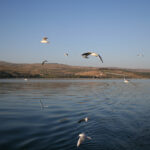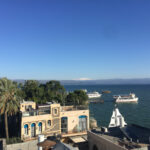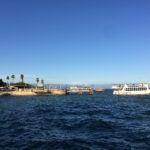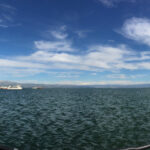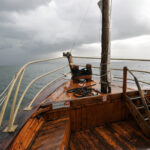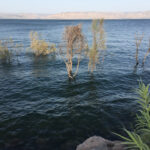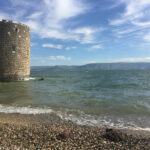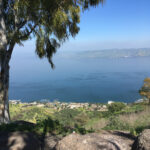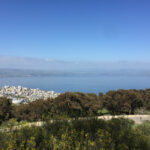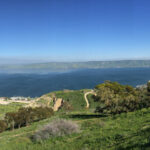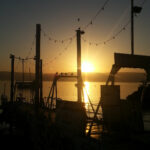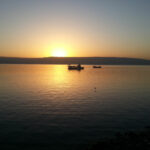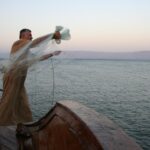Lake of Tiberias
Lake of Tiberias
The Lake of Tiberias or Sea of Galilee, (Hebrew: כִּנֶּרֶת, Kinneret), also called in the sacred texts Lake of Genesaret and Chinneret, is the largest freshwater lake in the State of Israel with a circumference of about 53 km. It takes its name from the city of Tiberias; Galilee from the name of the region; while the biblical toponym Lake of Genesaret takes its name from the disappeared city of Genesaret.
Located 213 m below sea level, it has a maximum depth of 43 m: it is the largest freshwater lake in Israel, surpassed in size only by the Dead Sea which is however a saltwater lake. The lake is located in the Great rift valley, a depression created by the detachment of the Arab and African plates and in which, from north to south, the waters of the Jordan River flow which feed the lake. For this reason the area is characterized by high seismicity, while in the past there was also a certain volcanic activity as evidenced by the presence of basaltic and igneous rocks.
It is placed between the territories of Israel and the Golan Heights. Over the centuries it has had many denominations according to the main cities that over time had prevalence on its banks. In the Old Testament it is called the sea of Kinneret (Numbers 34,11) and (Joshua 13,27), a term that could derive from the Hebrew word kinnor, or harp or lyre in relation to the shape of the lake itself. In the New Testament it is called lake or sea of Galilee, or of Tiberias or of Genesaret: Galilee from the name of the region in which it is located; Tiberias from the name of the city founded by Herod Antipas around 20 AD. on its north bank in honor of the emperor Tiberius; Genesaret from the name of a small fertile plain located on the western shores of the lake. The lake's Arabic name derives from Tiberias, the main city at the time of the Arab conquest.
The lake of Tiberias is known above all for having been, as indicated by the Gospels, the main seat of the preaching of Jesus. They tell of Jesus who visited many places on the shores of the lake several times, often crossing it by boat.
